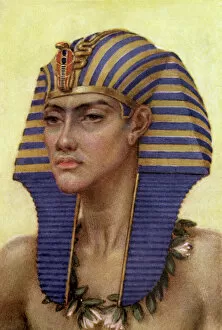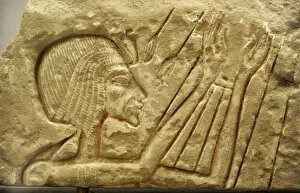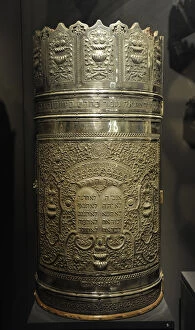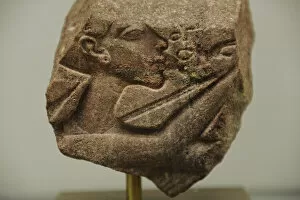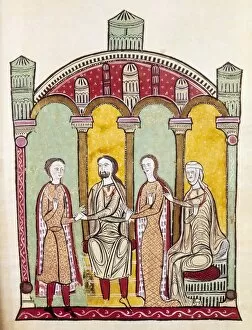Aton Collection
"Aton: The Legacy of Akhenaton and the Ancient Egyptian Civilization" Step back in time to the reign of Pharaoh Akhenaton
All Professionally Made to Order for Quick Shipping
"Aton: The Legacy of Akhenaton and the Ancient Egyptian Civilization" Step back in time to the reign of Pharaoh Akhenaton, a revolutionary ruler who challenged traditional beliefs and worshiped the sun god Aton. His capital city, El-Amarna, became a center for artistic expression and religious freedom. In this captivating relief from El-Amarna, we see Pharaoh Akhenaten and his beloved queen Nefertiti depicted with their daughter. Their unique appearance showcases the distinctive art style of this era - elongated features and exaggerated forms that deviated from traditional Egyptian art. The Temple at Tall el-Amarna stands as a testament to Akhenaton's devotion to his chosen deity. This sacred place was dedicated solely to the worship of Aton, symbolizing the pharaoh's radical departure from polytheism towards monotheism. As we explore further into ancient Egypt's New Kingdom period, we discover another remarkable relief depicting Amenhotep IV (Akhenaten) himself. The cartouche bearing his name signifies his divine status as pharaoh during this transformative time in history. Traveling beyond Egypt's borders, we encounter an intriguing cylindrical Torah scroll case discovered in Tripoli, Libya in 1935. Crafted by skilled silversmiths, it serves as a reminder that cultural exchange existed even thousands of years ago between different civilizations. Meanwhile in Spain during medieval times, Bernardo Aton - Viscount of Beziers - proudly presents his daughter on her wedding day. This noble family carries on a namesake reminiscent of ancient times when "Aton" held great significance among rulers like Pharaoh Akhenaton. Through these artifacts and historical references spanning across centuries and continents, we catch glimpses into the rich tapestry that is human civilization. From Egypt's awe-inspiring temples to intricate silverwork found afar; from powerful pharaohs challenging tradition to noble families preserving legacies.

